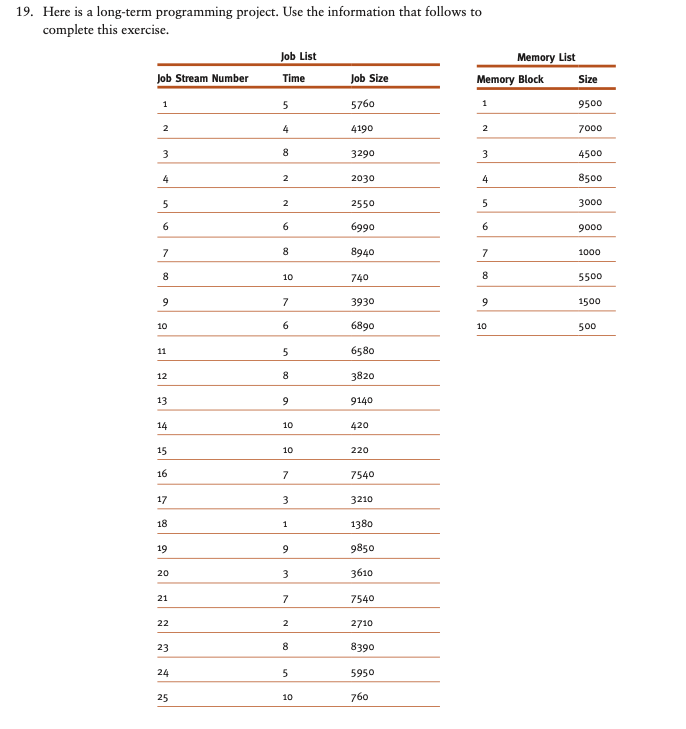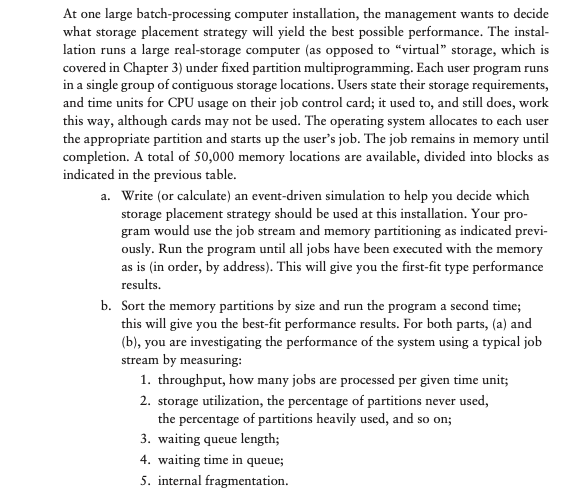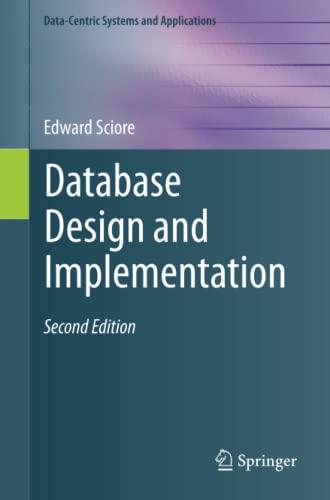Answered step by step
Verified Expert Solution
Question
1 Approved Answer
Use any language to program. Thanks! 19. Here is a long-term programming project. Use the information that follows to complete this exercise. Job List Memory


Use any language to program. Thanks!
19. Here is a long-term programming project. Use the information that follows to complete this exercise. Job List Memory List Job Stream Number Time Job Size Memory Block Size 5760 9500 4190 7000 3 3290 4500 8500 2030 4 3000 2550 6990 6. 9000 8940 1000 5500 10 740 3930 1500 6890 10 10 500 6580 11 3820 12 13 9140 14 10 420 15 10 220 16 7540 17 3210 18 1380 9850 19 3610 20 21 7540 22 2710 8390 23 24 5950 760 25 10 At one large batch-processing computer installation, the management wants to decide what storage placement strategy will yield the best possible performance. The instal- lation runs a large real-storage computer (as opposed to virtual" storage, which is covered in Chapter 3) under fixed partition multiprogramming. Each user program runs in a single group of contiguous storage locations. Users state their storage requirements, and time units for CPU usage on their job control card; it used to, and still does, work this way, although cards may not be used. The operating system allocates to each user the appropriate partition and starts up the user's job. The job remains in memory until completion. A total of 50,000 memory locations are available, divided into blocks as indicated in the previous table. a. Write (or calculate) an event-driven simulation to help you decide which storage placement strategy should be used at this installation. Your pro- gram would use the job stream and memory partitioning as indicated previ- ously. Run the program until all jobs have been executed with the memory as is (in order, by address). This will give you the first-fit type performance results. b. Sort the memory partitions by size and run the program a second time; this will give you the best-fit performance results. For both parts, (a) and (b), you are investigating the performance of the system using a typical job stream by measuring: 1. throughput, how many jobs are processed per given time unit; 2. storage utilization, the percentage of partitions never used, the percentage of partitions heavily used, and so on; 3. waiting queue length; 4. waiting time in queue; 5. internal fragmentationStep by Step Solution
There are 3 Steps involved in it
Step: 1

Get Instant Access to Expert-Tailored Solutions
See step-by-step solutions with expert insights and AI powered tools for academic success
Step: 2

Step: 3

Ace Your Homework with AI
Get the answers you need in no time with our AI-driven, step-by-step assistance
Get Started


